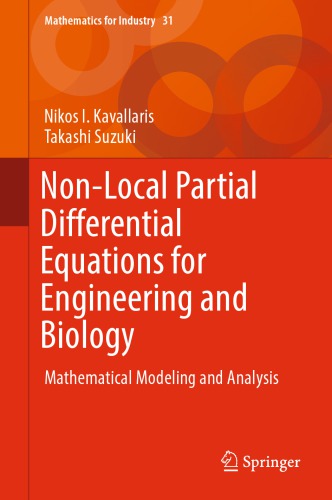

Most ebook files are in PDF format, so you can easily read them using various software such as Foxit Reader or directly on the Google Chrome browser.
Some ebook files are released by publishers in other formats such as .awz, .mobi, .epub, .fb2, etc. You may need to install specific software to read these formats on mobile/PC, such as Calibre.
Please read the tutorial at this link: https://ebookbell.com/faq
We offer FREE conversion to the popular formats you request; however, this may take some time. Therefore, right after payment, please email us, and we will try to provide the service as quickly as possible.
For some exceptional file formats or broken links (if any), please refrain from opening any disputes. Instead, email us first, and we will try to assist within a maximum of 6 hours.
EbookBell Team

4.1
30 reviewsThis book presents new developments in non-local mathematical modeling and mathematical analysis on the behavior of solutions with novel technical tools. Theoretical backgrounds in mechanics, thermo-dynamics, game theory, and theoretical biology are examined in details. It starts off with a review and summary of the basic ideas of mathematical modeling frequently used in the sciences and engineering. The authors then employ a number of models in bio-science and material science to demonstrate applications, and provide recent advanced studies, both on deterministic non-local partial differential equations and on some of their stochastic counterparts used in engineering. Mathematical models applied in engineering, chemistry, and biology are subject to conservation laws. For instance, decrease or increase in thermodynamic quantities and non-local partial differential equations, associated with the conserved physical quantities as parameters. These present novel mathematical objects are engaged with rich mathematical structures, in accordance with the interactions between species or individuals, self-organization, pattern formation, hysteresis. These models are based on various laws of physics, such as mechanics of continuum, electro-magnetic theory, and thermodynamics. This is why many areas of mathematics, calculus of variation, dynamical systems, integrable systems, blow-up analysis, and energy methods are indispensable in understanding and analyzing these phenomena.
This book aims for researchers and upper grade students in mathematics, engineering, physics, economics, and biology.